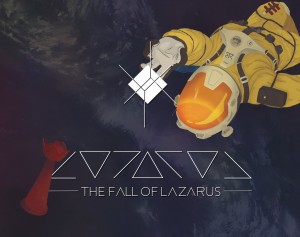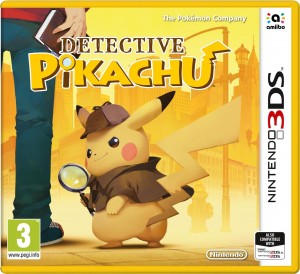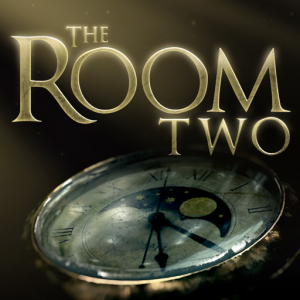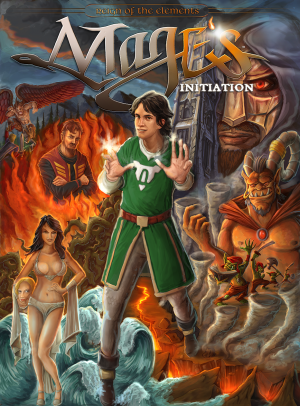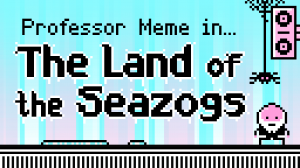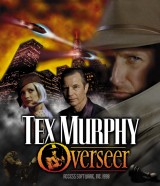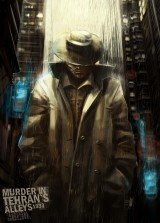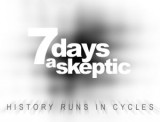Review for The Fall of Lazarus page 2
You might think a game called The Fall of Lazarus is a biblical tale in ancient times, but really it’s a story-driven sci-fi adventure set aboard the eponymous spaceship, on its way to colonize a planet from the Ancora system in the year 2279. You are awakened from cryostasis by the ship’s AI to deal with a serious mechanical problem. You have almost no memory of who you are or why you are there, but as you work to effect repairs you slowly begin to experience both pleasant and painful memories, so you need to find a way to not only fix the vessel but also come to grips with your past. Surprisingly, much of your effort comes in the form of casual-style puzzling, but the setting is an interesting one to explore, and the ending leads to a satisfying conclusion, though perhaps not in the way you might expect.
To launch the game you need to move towards a mysterious black cube, which appears again later in the story (and as you will discover has ties to a terrorist group). The real action begins when you awaken to a greeting by a mechanical but pleasant sounding feminine voice, welcoming you back to the USSC Lazarus, explaining what has happened to you and providing instructions on what to do next. Your memory loss and disorientation may be a side effect of being frozen, or perhaps it’s something else?
You soon learn that the mechanical voice belongs to Hybris, the AI unit that runs the entire ship. Hybris is a curious character, at times cracking jokes, sometimes taunting you, and yet in other situations helping you out. As the game progresses you will develop a love/hate relationship with Hybris that ultimately makes the experience more enjoyable. It turns out you are the only crew member who has been revived, so there are no other characters to interact with, though you do hear your husband’s voice during some of your hallucinations, plus that of a mysterious male character who briefly appears in certain sections of the ship.
Your first order of business is to hit the showers, get dressed, and find your locker, which is not labeled with your name, just an alphanumeric tag, but it must be yours – right? Once opened, you find a vial of “Ku” that you need to hide, an item that foreshadows an important story element. You also pick up a flashlight which is useful in the darker areas of the ship. Next you need to meet Hybris in the examination room. On your way, you notice the ship is falling apart in numerous additional ways, with Hybris promising to make repairs.
While the Lazarus is not a huge ship, there are a fair number of twists and turns, as well as multiple elevators that go to different decks, which can make it difficult to find your way at first. To help with this there are directions on the floor, along with signs pointing to various locations aboard. Once you have acquired the MNEM/021n3 unit – a folding tablet that can be used to hack terminals and scan blueprints of each level of the ship – you can refer to the maps which prove to be very useful in navigation. The tablet also lists your next objective if you lose track of what you are supposed to be doing. In addition, there are many helpful posters on the wall providing game control tips, layouts of your current level, and more. (When clicked on, these show a text overlay making them easier to read.) Many inspirational posters will remind you of the larger purpose of the voyage, which is to ultimately colonize another planet.
Once you meet up with Hybris in the examination room and acquire the MNEM/021n3 unit, The Fall of Lazarus really gathers steam. On the same deck is the Dinner Area, where you experience the first of several strange events. When you try to leave this section, you’ll find yourself wading through a rolling sea with a lighthouse in the distance. Make your way there to see a "Welcome Home" sign and evidence of a party. Once you locate a particular item inside, you find yourself back in the Dinner Area, very confused. As you continue to play and have more of these visions, you’ll come to realize that you are hallucinating. This is one of the pleasant memories, but others are much, much darker. It is through these sequences that the emotional impact of the game is felt, slowing revealing the tortured past of the protagonist. There are a few mysteries to uncover on your own and I don’t want to reveal too much, but by the end of the game you will be sympathetic to your character’s plight and, at the same time, left with a sense of hope.
Unfortunately, the experience stubs its toe when it comes to gameplay. Almost all the puzzles are of the “casual” variety, with brute force needed in the absence of any clues on how to solve them. You will join dots in star constellations with a single continuous line, randomly hit buttons on a keypad to unlock a door, twirl knobs to connect a power source, align coloured vectors within multiple segments, etc. While these can be fun, there really needs to be some basic instruction on how to interact with them. For example, one of the more difficult puzzles is figuring out the course correction needed by inputting the information into a navigation simulator. This challenge involves aligning a series of hexagonal shapes based on the coloured lines inside them. You need to rotate the shapes to solve the puzzle, but there is no indication of how to do that, or even that you can. I had to consult a walkthrough to find out it was the middle mouse button that performed that function. Only once I knew that was I able to solve the puzzle, though it still took some time.
Another task that frustrated me was a scavenger hunt required for the Earth Connection Table. When you find the first collectible item, your character will comment that it needs to be placed on the table, but when you find others she just says “that shouldn’t be there.” Even if you deduce that these objects also need to be placed on the table, there is no reference to how many there are in total, and some are easily missed. Completing this objective is not necessary to finish the game, but it does add to the overall narrative flavour, so a better sense of progress would have been appreciated.
Where The Fall of Lazarus really shines is in its exploration and discovery of the backstory. As you work your way through the ship and the various tasks assigned by Hybris, you will need to hack into several terminals and learn about the crew. Hacking requires the use of the MNEM/021n3 unit and noting the security question, which will guide you to right area in the profile to unlock the station. In most cases, the results include context such as videos and personal emails, but in some cases it will unlock a key area of the game in order to proceed.
Although there is no direct interaction with anyone but your scripted dialog with Hybris, I really enjoyed reading through the crew bios, as they made me relate better to the characters and past events. The profiles are realistic and give you a sense of each member’s personality, as well as their stake in the success of the mission. There are hints of a darker past, particularly regarding rampant drug use that caused problems on the ship. While not needed to finish the game, EXONET (the Lazarus’s version of the internet) entries are also interesting to read, providing a fair bit of background on the spacecraft, its mission and the crew. However, the reason why the ship is now in trouble and what led to the current situation is never fully revealed, leaving players to speculate on what has happened.
The interface is standard first-person 3D fare with both keyboard and gamepad support. Keyboard configuration can be mapped to suit your preference, but by default you use the WASD keys for direction, left mouse button for interaction and the right to zoom in. Along with being able to rotate shapes in the appropriate puzzle, the middle mouse button can be used for various other tasks, most notably throwing objects. You can open most cupboards and doors, and pick up and manipulate many objects. Almost all of them are useless, but there are a few interesting items, such as a model of the USS Enterprise from Star Trek. Another interesting cultural reference is a pinup of the Woman in Red from The Matrix. There is no inventory except for the items you need to collect for the Earth Connection Table, and even these are not accessible until after you have collected all of them.
There is an autosave system to record your progress, but I ran into a few problems with it. First I tried to reconfigure the keyboard controls mid-game, but when I resumed play I was kicked out and had to restart from the last save point. Second, one of the hallucination sequences disappeared after I quit the game in the middle of it and I could never access it again. I had to restart from the beginning to trigger this sequence. Otherwise the checkpoint system works fairly well, but there are instances where you may need to replay a fair chunk of the game (5 to 10 minutes’ worth) depending on where you decide to quit, so pay attention to the on-screen symbol indicating when your current progress is being saved.
Graphically I can give The Fall of Lazarus only a passing grade, as most of the environments, while clear, lack detailed textures and use a muted palette of grays and neutral tones. Many areas of the ship are dimly lit, and even though you have a flashlight, it has limited ability to illuminate the scene, and there is no ability to adjust brightness or contrast in the game settings. This makes it difficult to find certain objects needed for the Earth Connection table. It’s a fairly static experience as well, as there are no cut scenes and only a very few animations throughout.
Sound effects are well done, such as the draining of cyrofluid from your chamber at the beginning, the ship’s numerous doors opening and closing, mechanical malfunctions and so on. Voice acting is similarly solid but sometimes your character sounds as if the actress was just reading lines, while at other times it comes across as over-the-top melodrama. This is a bit surprising, because Katherine Kingsley has won several acting awards. Be aware that there is a fair bit of profanity, including the f-bomb and other expletives. There is very little music, but what there is proves to be quite atmospheric, providing non-looping synthesized tunes (dramatic drumming, for example) that add to the tension when appropriate. The bulk of the background noise is simply the hum of the ship’s engines and other equipment.
I spent about three hours playing The Fall of Lazarus, which is fairly short for an adventure of this type. This can be extended somewhat because along with the game itself, the main menu allows you to play “The First Passenger,” which is essentially the game’s pre-release demo. The demo starts out the same way as the main game, but only allows you to explore a very limited area of the Lazarus and includes a single standalone hallucination sequence. This must be played through in a single session (no saves), and while it varies considerably from the game proper (a much worse voice actor, somewhat abstract gameplay), it is worth your time, not only to familiarize yourself with the mechanics, but to better understand the plight of the protagonist at the full game’s conclusion.
According to the Gospel of John, Lazarus was the last miracle that Jesus performed, in which he resurrected Lazarus from the dead four days after his burial. While I’ll leave it to you to discover just how he purportedly did that for yourselves, at the game’s conclusion this knowledge is relevant and leaves a lasting impression as the credits roll.
The game’s small development team and budget are reflected most in the mediocre production values on display here, but The Fall of Lazarus does a good job of telling a difficult story in a compelling way, packing a lot of little touches into a relatively short play time. The puzzles aren’t nearly as interesting as the narrative unfolding, but if you can get past the game's shortcomings, you will be rewarded with a thought-provoking tale of guilt and remorse on a journey of self-discovery in space.


